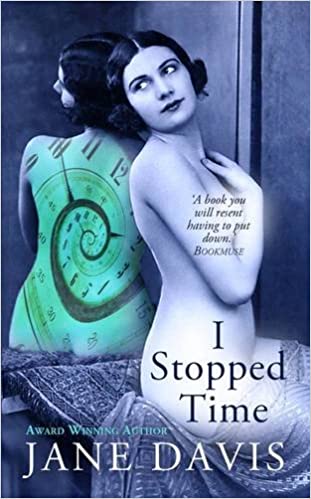15 March 2021 (22:30)

One of the consistently compelling features of Jane Davis’ work is the elegance imbued within her writing style, which makes each title such a sumptuous treat.This is my fifth sojourn into the author’s impressive list of books and I am struck by the breadth of historic and contemporary backdrops, between which Ms Davis seems to move with such consummate ease. However, this particular book, set in large part during the decadent Edwardian era, seems to give full rein to the author’s lavish prose and introduces another wonderfully characterized female protagonist.
Lottie Pye was born in 1910 and in mysterious circumstances was spared the workhouse, instead to be raised in Brighton, in the care of humble bakers, Kate and Sidney. By contrast, as a child, Sir James Hastings, her son, enjoyed the trappings of wealth, but grew up motherless, that’s to say he only met his mother once, at a photographic exhibition in Brighton when he was aged ten, where she was accompanied by an amputee soldier, apparently taken under her wing. However, since Lottie went on to live to the grand age of 108, Sir James was an old man himself by the time his mother’s solicitor wrote to inform him of her death. There followed the delivery of Lottie’s life’s work, forty two boxes of photographs and a letter partially explaining/excusing her absence from his life.
It’s an extraordinary scenario and through a cleverly crafted plot, the reader is immersed into the life of a woman apparently born to a great purpose and the slow reveal of her journey is told through the alternating stories of mother and son. The interplay between the fly-on-the-wall immediacy of ‘Lottie’s story’ and the retrospective reflections of Sir James’, combine seamlessly into an absorbing family saga. Both stories are told in the first person and Sir James is assisted by a photography student (Jenny), to interpret the snapshots of his mother’s professional progression and deduce their significance. Over time Jenny is also able to offer insight into Lottie’s circumstances and some impartial balance, which may even advocate Lottie’s posthumous rehabilitation, or at least a more compassionate reading of the judgements made.
The book is teeming with complex relationships and examines the relevance of blood ties and societal expectations of mothers particularly, but also the undeniable power of love and the fickle nature of human attachment. The fault lines of class and gender are also prominent, as is the concept of ‘doing one’s duty’, which may constrain an individual’s behaviour and aspirations with glutinous social norms. Still, what sets Lottie Pye apart is having the courage to resist the path of compliance, but being prepared to pay the personal price of those contentious choices, in an effort to remain true to herself. Certainly by the end of the book, I had become quite an admirer of Lottie Pye and her ardent refusal to be cowed by the inequities of her time. A life well worth exploring and another book destined for my ‘favourites shelf’, in the sure knowledge that there is more to be wrung from this excellent novel.
